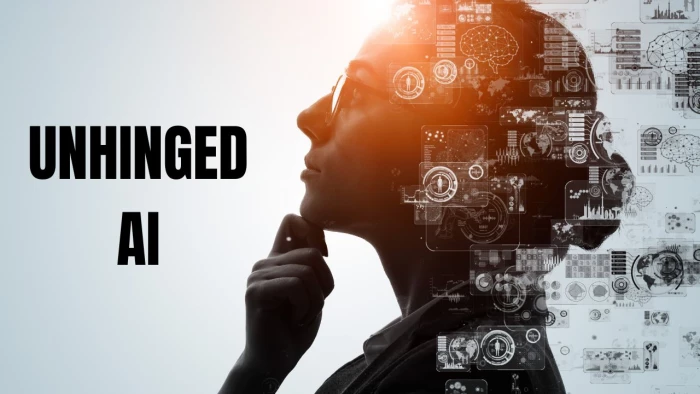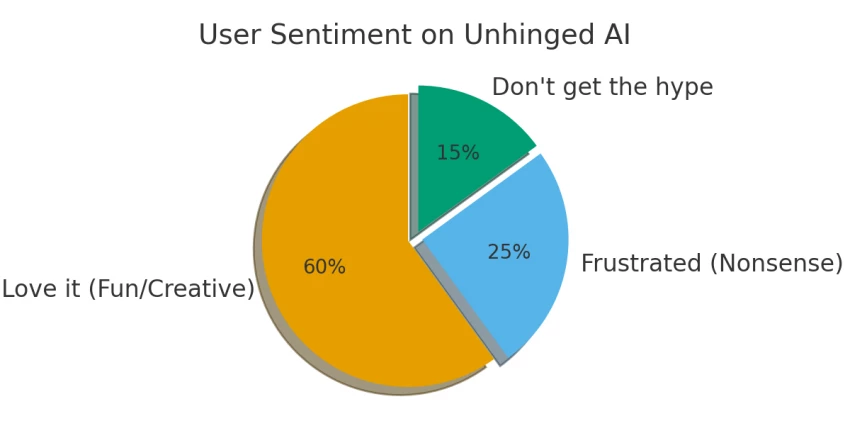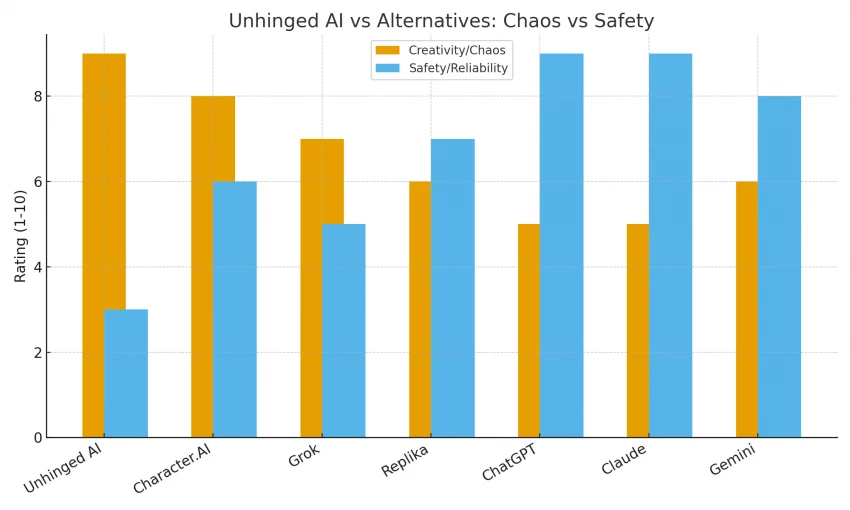

Imagine asking an AI: “Write me a motivational speech in the voice of a confused pirate who just discovered TikTok.”
Most AI tools will say: “Sorry, I can’t do that.”
Unhinged AI will respond with a 500-word rant including sea shanties, hashtags, and a dramatic monologue about Wi-Fi.
That’s the core of it — Unhinged AI exists to push past politeness, to explore the weird, the funny, and sometimes the downright absurd.
Unhinged AI isn’t just one app you download — it’s become a movement in AI design. It refers to a class of chatbots, content generators, and personalities that deliberately skip the corporate filters.
While ChatGPT or Claude focus on being helpful and factually correct, Unhinged AI thrives on being the AI equivalent of improv comedy: spontaneous, off-the-rails, and designed to surprise you.
Let’s be honest: most AI tools sound the same. They’re polite, professional, and overly cautious.
Here’s where Unhinged AI flips the script:
This “difference” is exactly why people screenshot Unhinged AI outputs and share them online — it’s not boring.
You might wonder: Who actually needs a chaotic chatbot?
Turns out, a lot of people:
In short: If ChatGPT is your study buddy, Unhinged AI is your 2AM “let’s prank call someone” friend.
Think of these tools as characters in an oddball sitcom:
Each one interprets “unhinged” a little differently — from full roleplay mode to silly text generators.
Creators are where this shines most:
For anyone trying to stand out online, Unhinged AI acts like a creativity spark plug — giving you raw, bizarre material you can polish into engaging content.
Here’s where the fun has limits. Because it’s less filtered, Unhinged AI can pose risks:
In short: it’s safe if you treat it like entertainment, not a source of truth. Always be mindful of what you share with it.
One reason for its popularity? It’s accessible.
For creators, that means you can experiment without committing to expensive subscriptions.
If we break it down:

60% of users → Love the creativity.
25% → Frustrated by nonsense replies.
15% → Don’t see the point.
| Pros | Cons |
| Hilarious, unpredictable outputs | Accuracy is often poor |
| Great for memes & content | May generate offensive replies |
| Breaks monotony of safe AI | Privacy risks not always clear |
| Free or low-cost to use | Not reliable for work or research |
Let’s visualize it:
Each has a role. It’s not about better or worse — it’s about what you need. For productivity, go mainstream. For fun, go unhinged.

Not vibing with Unhinged AI? Here are some other options:
And of course:
ChatGPT, Claude, Gemini → If you want safe, structured, professional answers.
Getting started is ridiculously easy:
No steep learning curve — it’s built for fun.
Unhinged AI could be a temporary meme trend — or it could signal a bigger shift in how we design chatbots.
The fact that Forbes covered Grok’s “unhinged” branding suggests the second option is very possible.
Q: Is Unhinged AI free?
Yes, most versions are free, with optional upgrades.
Q: Is Unhinged AI safe?
It’s safe for fun, but not safe for privacy or facts.
Q: Can I build my own unhinged bot?
Yes, if you’re a developer. For everyone else, you can roleplay through existing platforms.
Q: How is it different from ChatGPT?
ChatGPT filters itself heavily; Unhinged AI does not.
Q: Where can I try it?
On BasedLabs, Talkie AI, Dippy AI, or via directories like Toolify and Nextool.
At the end of the day, Unhinged AI isn’t about productivity — it’s about play. It’s the digital equivalent of hanging out with the class clown: sometimes it’s hilarious, sometimes it’s nonsense, but it’s never boring.
If ChatGPT is your teacher, Unhinged AI is your drunk uncle. Both have lessons to give — just in very different ways.
Be the first to post comment!